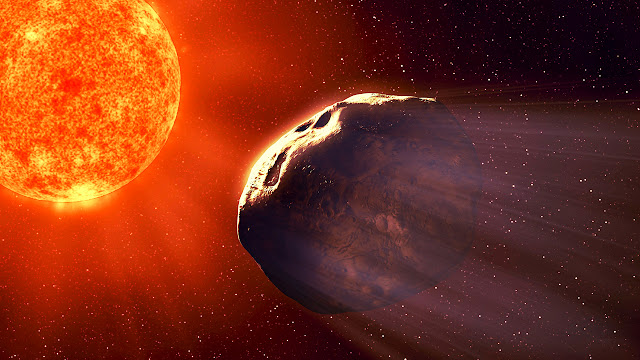NASA publishes a video of a large comet that has just entered the solar system.
Last Sunday, while tracking solar movements, NASA’s Solar and Heliospheric Observatory captured a comet.
Astronomer Tony Phillips said for Spaceweather.com that “the tragic comet was probably definitely a Kreutz sungrazer,’ a piece from a big comet that split away many years ago.”
“These pieces circle the sun in a swarm, and every day at least one of them comes too near and breaks apart. Most are too small to observe, measuring little more than a few meters across, but sometimes one this size, like today’s, draws attention.”

The strong gravitational attraction of the sun was too much for the comet to withstand, according to CNET.
It is fair to assume that the sungrazer has evaporated in the face of the sun’s intense heat based on the image above.
THE COMET DID NOT SURVIVE: As with most sun-diving comets, this one did not come out the other side of the Sun after its nearest approach to the Sun (perihelion).
pic.twitter.com/ok5fHbfdDv
— Keith Strong (@drkstrong) August 7, 2022
More about the comets
Comets are small entities in the solar system that heat up and emit gas as they approach the sun. A few hundred meters to tens of kilometers is the size range of comets.
NASA states that comets are solar system-orbiting cosmic snowballs made of frozen gases, rock, and dust. They grow to the size of a sizable town when frozen. A comet heats up and ejects dust and gases into a huge, blazing head that is bigger than most planets when its orbit puts it near to the Sun.
Millions of kilometers distant from the Sun, the dust and gas combine to create a tail. The Kuiper Belt and much further Oort Cloud are presumably home to billions of comets that orbit our Sun.
Let’s get to know “Kreutz sungrazers”
Kreutz sungrazers are supposed to be pieces of a big comet that broke off a few centuries ago because of their unusually near orbits to the sun.
These celestial bodies, which bear the name Heinrich Kreutz after the German astronomer, can occasionally be seen in daylight around the sun. The most recent of them was Comet Ikeya-Seki, which may have been among the most brilliant comets of the previous millennium. It was discovered in 1965.
The article was first published on InterestingEngneering.
Do not forget to share your opinion with us to provide you with the best posts !



0 Comments